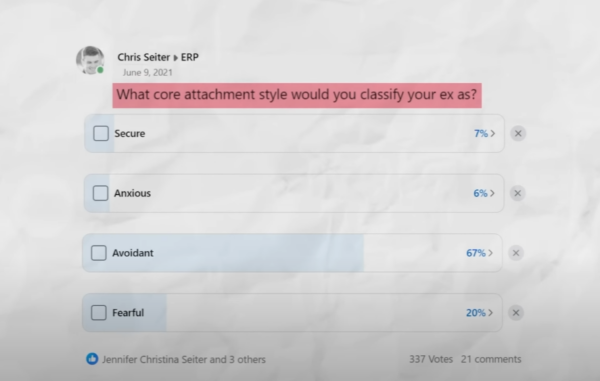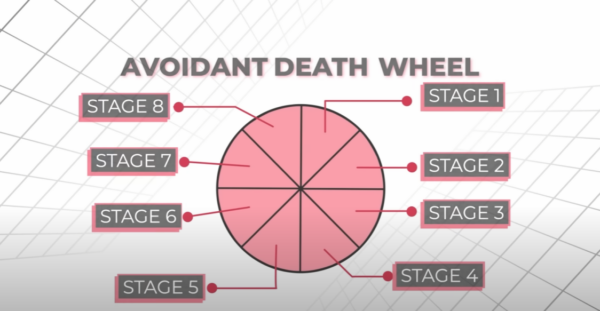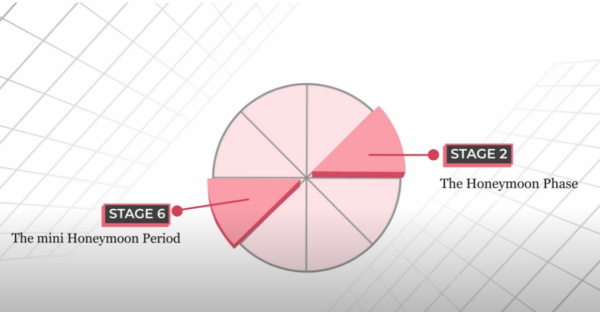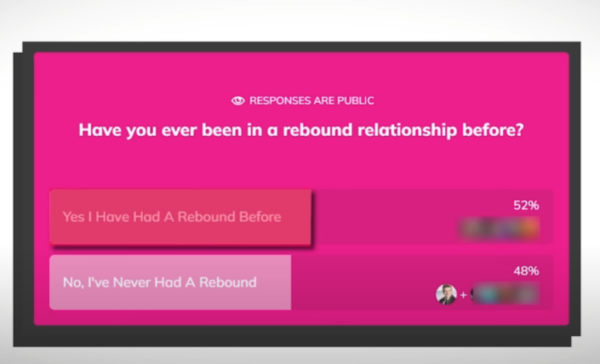For an avoidant to truly experience regret, one key condition has to be met: they need to realize that they’ve lost you.
Something I’ve talked in-depth about here,
Avoidants often equate intimacy with a loss of independence, which leads them to pull away when a relationship gets too emotionally close. And that’s where things start to unravel in the most fascinating ways.
The Poll That Changed Everything
Check this out: on June 9th, 2021, I ran a poll in our community asking one simple question—what core attachment style would you classify your ex as? The results were pretty eye-opening.
- Out of the 337 individuals who participated in the poll
- Over 87% believed they had either a dismissive avoidant ex or a fearful avoidant ex.
That’s when I knew I had made a major miscalculation.
Up until that point, I had only talked about avoidants once on this YouTube channel—just in this video right here.
And now I had all this data basically saying that 90% of the people who watch my videos have an avoidant ex. Is this why you’ve been avoiding me lately?
So, I did what any self-respecting content creator would do—I bought books, did research, and talked to experts. That’s when I started learning something rather odd about avoidants—specifically how they react when they believe they’ve lost you.
The 8-Stage Avoidant Relationship Cycle
Look at this.
This is my theory on how avoidants—specifically of the dismissive variety—experience relationships. It’s a clockwise circle that can be divided into eight distinct stages:
- Stage 1: The avoidant wants someone to love them.
- Stage 2: They find someone and enter the honeymoon period.
- Stage 3: The avoidant’s core wound gets triggered—usually by their partner’s anxious core wound.
- Stage 4: The avoidant starts thinking about leaving the relationship.
And here’s where we need to pause—at exactly the halfway point of this circle—because everything we’re going to be talking about from this point on happens after that.
- Stage 5: The avoidant actually leaves the relationship.
- Stage 6: The avoidant goes through a “separation elation” phase—this mini honeymoon period.
This is where things get really, really interesting. Take this research from the wildly popular avoidant attachment resource, Free to Attach:
“Often feeling an initial sense of relief at the relinquishing of obligations and the sense they are regaining their self-identity—not tending to initially miss their partner. This is separation elation. As the pressure to connect is gone.”
This makes total sense when you consider that the vast majority of people with dismissive avoidant attachment styles have a core wound revolving around the fear of losing independence.
Let’s back this up with a quote from Attached by Amir Levine and Rachel Heller. On page 118, they state:
“Avoidants often mistake self-reliance for independence.”
The Endless Loop of Honeymoon Highs
So, when they break up with you, they enter into what I like to call this second honeymoon period. Look at the position of stage six on our circle—it’s directly across from stage two, the original honeymoon period.
That’s by design.
I believe dismissive and fearful avoidants are caught in an endless loop of honeymoon highs—jumping from one relationship to the next, always chasing that initial euphoria.

What Are Your Chances of Getting Your Ex Boyfriend Back?
Take the quizAn avoidant often falls in love during stage two—partly because the relationship is new, and partly because not a lot of commitment is required. But once more commitment is expected, the shine starts to wear off. That’s the inevitable downfall seen in stages three, four, and five.
Stage six—the mini honeymoon—is all about regaining their independence and feeling overjoyed by that fact.
How Avoidants Trick Themselves
Now, for most avoidants, this is an unconscious process. They aren’t even aware they’re doing it. According to Free to Attach:
“Avoidants are experts in repressing their emotions. They do not feel much initially, typically appearing to recover quickly after relationships and can move on fast.”
So, theoretically, avoidants can just start the entire cycle again with someone new.
But what’s interesting is that they skip stages seven and eight to do this.
That got me thinking—does this actually work? Is this an effective way to process grief?
A quick search on YouTube shows that most people believe rebound relationships don’t work.

According to The Atlantic,
Rebound relationships have a terrible reputation.
But in one study of people recovering from breakups, those who’d found a new partner were more confident in their desirability, more trusting of others, and less likely to say they still had feelings for their ex.
Amy Hackney, a psychology professor at Georgia Southern University, found:
“The sooner the college students in the study began dating someone new, the faster they said they felt recovered from their prior relationship.”
The Reality: Not Everyone Rebounds
So, I ran my own poll. In our community, 52% said they’d had a rebound relationship. 48% said they hadn’t.
So it’s almost a 50/50 split.
And for the 48% who didn’t skip stages seven and eight—something fascinating happens.
- Stage 7: The breakup finally hits the avoidant.
- Stage 8: The avoidant enters a kind of depressive state—”Why does this always happen to me?”
Once stage seven hits, stage eight is like a domino effect.
Let’s go back to Free to Attach:
“Avoidants are free to long for an ex once that person is unavailable, out of the relationship, and typically out of contact.”
Let’s pull from Attached again, page 124:
“One consequence of devaluing your romantic relationship is that you often wake up long after it’s gone stale—forgetting all the negative things—and wonder what went wrong, reminiscing about your long-lost partner.”
That’s the phantom ex syndrome.
Phantom Exes: Just One… or Many?
But something about this bugs me. No one ever talks about whether there’s just one phantom ex—or multiple. Again, I searched and found nothing.
Here’s my theory: it’s totally possible for an avoidant to have multiple phantom exes from different stages of life.
And as I interpret the phantom ex syndrome, it doesn’t even have to be someone they dated. It can be an ideal—a fear of missing out on that type of connection.

What Are Your Chances of Getting Your Ex Boyfriend Back?
Take the quizDuring stages seven and eight, they start considering getting back with you—having now idealized you into a phantom ex. And if that happens, the whole avoidant “death wheel” starts over again from stage one.
But there’s one catch: they must truly believe they’ve lost you.
“Avoidants are free to long for an ex once that person is unavailable, out of the relationship, and typically out of contact.”
Let’s go back to stage six for a second—the separation elation stage. The worst nightmare for an avoidant is to be overwhelmed by your anxiety, needing constant reassurance, and not giving them enough space. All of that reinforces their decision to leave and prolongs their second honeymoon period.
Final Thought: The Phantom Worship Begins Only When You’re Gone
It’s only after the avoidant truly realizes they’ve lost you that they’re given the opportunity to worship you from afar.
At least… for now.



